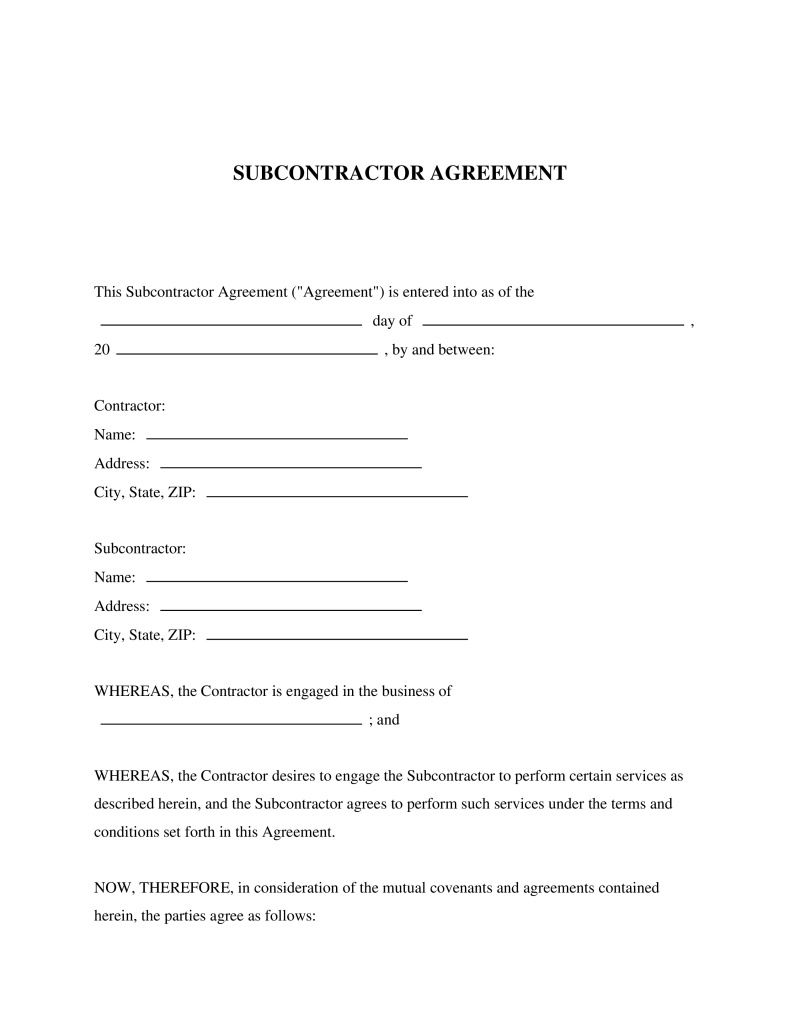A Subcontractor Agreement is a legal document outlining terms between a contractor and subcontractor for specific project tasks and responsibilities.
Contractor Name
Type your full legal name as it appears on official documents, including your first name, middle name (if any), and last name. For example, if your name is John Michael Smith, write "John Michael Smith." This name will be used in the contract and must match your identification to ensure legal validity.

Table of Contents
What is a Subcontractor Agreement?
A Subcontractor Agreement is a crucial legal document that establishes the terms of service between a contractor and a subcontractor. This document delineates the scope of work to be performed, compensation, timeline, and other conditions pertinent to the subcontracted work. It serves as a binding commitment, ensuring clarity and mutual understanding between parties, thus minimizing potential disputes. Primarily, this agreement is necessary for contractors who wish to delegate part of their contracted obligations to another party, the subcontractor, thereby facilitating project completion through specialized services. Understanding the distinction between contractor vs subcontractor roles is essential here: while the contractor holds the primary contract with the client, a subcontractor performs specific tasks under direction from the contractor.
Key Features
Important Provisions
- Scope of Work: A detailed description of services or tasks that the subcontractor will perform under this agreement.
- Payment Terms: Comprehensive details on how and when the subcontractor will be compensated for their services.
- Indemnification Clause: Provisions requiring the subcontractor to compensate the contractor for any losses arising from their work.
- Termination Clause: Conditions under which either party may terminate the agreement before completion of services.
Pros and Cons
Pros
- +Facilitates clear communication between contractor and subcontractor by explicitly stating expectations and responsibilities.
- +Minimizes legal risks by establishing a formal agreement that can be enforced in court if necessary.
- +Enhances project management through delineation of tasks and timelines, contributing to more efficient workflow.
- +Protects intellectual property and confidential information through well-defined clauses.
- +Offers flexibility in engaging specialized skills for specific project needs without employing full-time staff.
Cons
- -May require negotiations that could delay project commencement if there are disagreements on terms.
- -Could potentially introduce liability issues if the subcontractor fails to comply with regulations or standards outlined in the agreement.
- -Requires careful drafting to avoid ambiguity that could lead to disputes or misinterpretation of contractual obligations.
Common Uses
- When a contractor needs specialized skills not possessed by their team for a particular project phase or component.
- For projects where additional workforce is needed temporarily without the commitment of hiring permanent employees.
- In situations where contractors are managing multiple projects simultaneously and need to outsource part of their workload.
- To fulfill specific regulatory requirements or standards that necessitate expertise from licensed professionals outside the contractor's team.
- When contractors aim to mitigate risks by having aspects of their project handled by firms or individuals with specific insurance coverage or certifications.
- For tasks that require local knowledge or presence which the main contractor cannot efficiently provide due to geographical constraints.
Frequently Asked Questions
Do you have a question about a Subcontractor Agreement?
Example questions:
Not the form you're looking for?
Try our legal document generator to create a custom document
Community Discussion
Share your experience and help others
Legal Notice: Comments are personal opinions and do not constitute legal advice. Always consult a qualified attorney for matters specific to your situation.
Comments (0)
Leave a Comment
No comments yet. Be the first to comment!